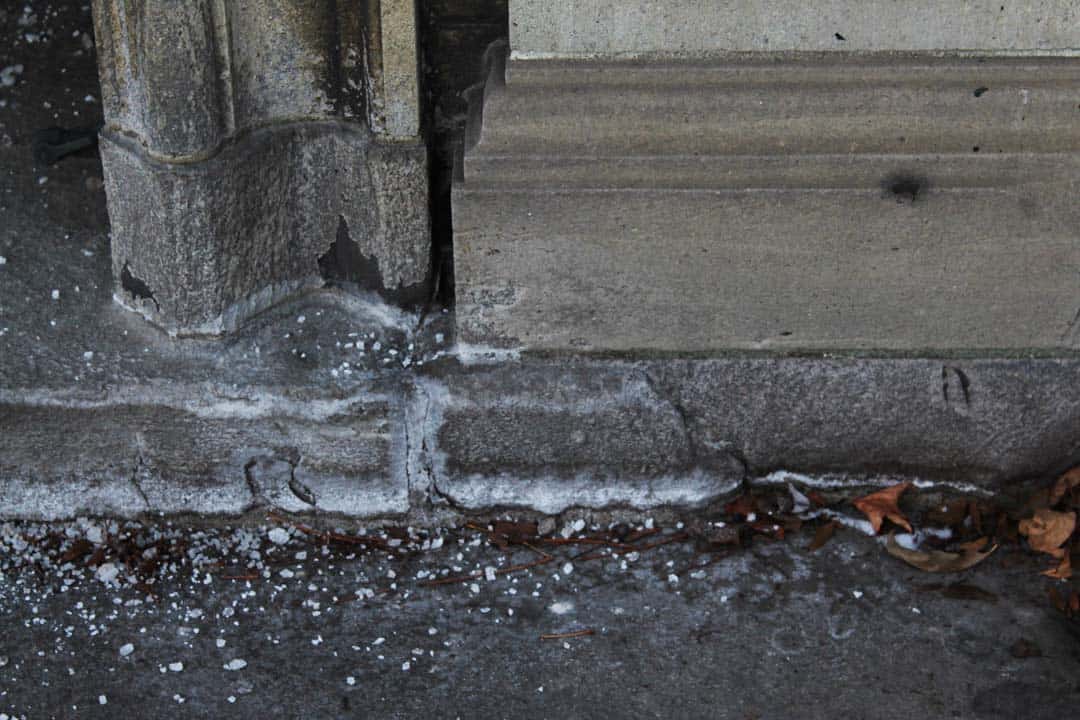Freeze-thaw cycles are wreaking havoc on Toronto’s aging infrastructure thanks to the mercurial weather that has prevailed over the past few weeks. With much of Toronto’s infrastructure nearing its 50-year lifespan, the city must turn to sustainable urban solutions and innovations.
“A key concern… is the era in which infrastructure was built. There was a boom after World War Two. Much of the infrastructure built then was [designed] for a ~50 year life cycle, meaning it is now pushing the need to be replaced,” wrote Shoshanna Saxe, an assistant professor at U of T who specializes in sustainable urban infrastructure, in an email to The Varsity.
As temperatures plummet during the winter months, sidewalks and roads freeze over. This is the status quo here in the ‘true north.’ While the deep freeze itself is not a problem, the rapid swings toward warmer weather are. These fluctuations between temperature extremes can crack concrete and break water mains, causing a whiplash effect on the entire city.
Potholes, for example, are created when melting ice and snow seep into cracks in the road’s top layer of asphalt and freezes again, leading to expansion. However, modern Portland cement concrete, which is used in some Toronto roads, is inert; the aggregates — the compacted mass of sand and gravel that makes up the concrete — do not have the ability to bend and stretch with this expansion.
According to Cheryl San Juan, the media contact for the City of Toronto’s Engineering and Construction Services division, a pothole is created when a vehicle runs over a section of the road that is under stress from this moisture expansion. “The weight of vehicles going over this section of road breaks the pavement and the asphalt is forced out.”
As the 50-year lifespan of Toronto’s infrastructure approaches, the need for replacement is manifesting itself in familiar inconveniences like potholes and water main breaks.
Climate change is also a player in this issue, with one of its effects being more frequent extreme weather fluctuations. Saxe explained that Toronto’s infrastructure design loads — the maximum amount of stress a system can handle while still performing adequately — are outdated given current weather patterns.
Such problems have given rise to the field of sustainable urban infrastructure, a multidisciplinary field that includes civil engineering, environmental sciences, economics, and materials sciences. The mandate of sustainable urban infrastructure can be summarized in one word: resilience.
Initiatives like ResilientTO — which aim to improve resilience to challenges like “climate change and extreme weather, and a variety of issues specific to our city, such as inequality, aging infrastructure, housing, and transit” — and TransformTO, “Toronto’s new and ambitious climate action plan,” are just two local examples of responses to the demand for sustainable infrastructure.
Among the many concerns that these initiatives and other key players seek to address are durability, greenhouse gas production, the promotion of sustainable lifestyles, and social issues.
One such innovation for more durable materials is ‘self-healing’ concrete. Henk Jonkers, a professor at the Delft University of Technology in the Netherlands, has embedded concrete with capsules of limestone-producing bacteria, which can survive in concrete without water or oxygen, and calcium lactate, which acts as a food source for the bacteria. When the concrete cracks, the bacteria are able to produce limestone, filling the fissure and eliminating the need for repairs. However, the expense required to produce the concrete is a barrier to its implementation, so only time will tell how this technology could be adapted more practically.
Other innovations have been thousands of years in the making. Roman concrete, for example, has been known to stand the test of time; many 2,000-year old structures made of the material still exist today. The longevity of Roman concrete is due in part to the minerals and volcanic ash that were incorporated into the mixture. The combination of these materials make the concrete more flexible and tolerant to corrosion. The rarity of the materials, however, may impede their widespread incorporation into urban infrastructure.
“[In Toronto,] infrastructure investment needs to step up to the challenge of the 21st century and growing population — it is yet to be seen if we will rise to that challenge” said Saxe. “A key challenge is required design life and guidelines. How long should we build infrastructure for? The longer we build for the more expensive it is up front but the less replacement is needed down the line.”
Whatever the obstacles, every advancement and innovation helps propel us forward into a greener, more sustainable future.


